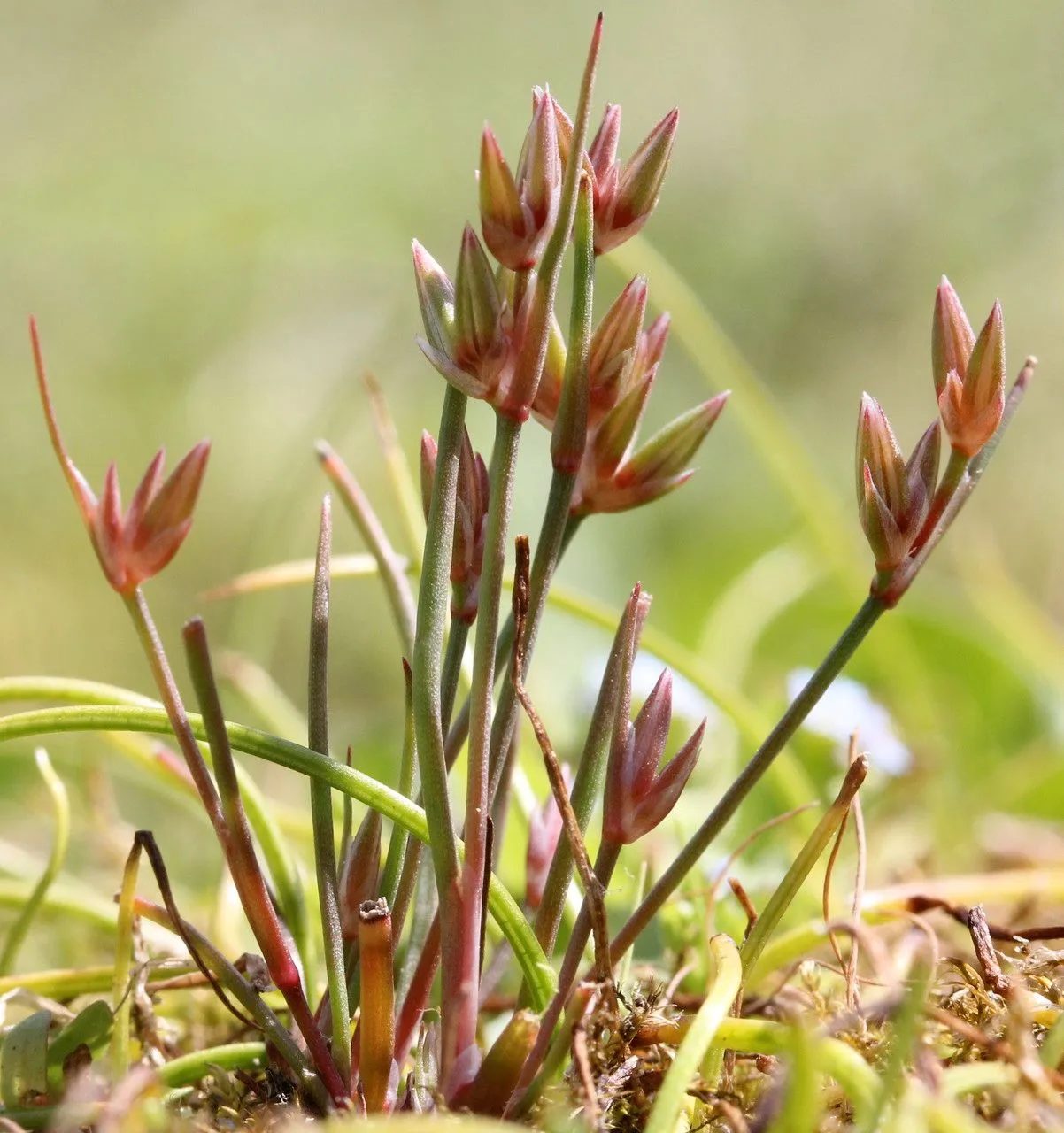
Author: Rich. ex Thuill.
Bibliography: Fl. Env. Paris, ed. 2: 178 (1799)
Year: 1799
Status: accepted
Rank: species
Genus: Juncus
Vegetable: False
Observations: W. Europe to W. & C. Medit.
Pygmy rush, known scientifically as Juncus pygmaeus, is a fascinating and petite member of the Juncaceae family. First documented in 1799 in the publication Fl. Env. Paris by Rich. ex Thuill., this plant is native to a considerable range extending from Western Europe to the Western and Central Mediterranean regions.
Juncus pygmaeus is distinguished by its delicate and diminutive stature, which makes it a unique sight among rush species. Adapted to thrive in a variety of environments within its native range, this species often finds its niche in damp, sandy, or muddy soils, typically in areas that experience periodic water saturation.
Despite its small size, Pygmy rush plays a crucial role in its ecosystem. Its presence contributes to the biodiversity of wetland habitats, providing cover and supporting various forms of wildlife. Additionally, its growth helps to stabilize the soil, reducing erosion and maintaining the integrity of these sensitive environments.
The plant features slender stems and fine, grass-like leaves. During its flowering season, Pygmy rush produces compact clusters of flowers that add a subtle charm to its surroundings. These flowers are particularly adapted to the conditions within its range, showcasing the resilience and adaptability of the species.
Juncus pygmaeus is not just a botanical curiosity but also an indicator of ecological health, acting as a barometer for the quality of wetland environments. Its preference for undisturbed habitats means that its presence is often a positive sign of minimal human impact.
Overall, the Pygmy rush is an excellent example of the intricate relationships within natural ecosystems. Understanding and preserving species like Juncus pygmaeus is critical for maintaining the balance and health of the wetland areas they inhabit.
Deu: zwerg-binse, zwergsimse
Nld: dwergrus
Fra: jonc nain
Eng: pigmy rush
En: Pygmy rush, Pigmy Rush
Da: Dværg-siv
Nl: Dwergrus
Fi: Kerivihvilä
Fr: Jonc nain
De: Zwerg-Binse, Zwerg-Simse, Zwergbinse, Zwergsimse
It: Giunco pigmeo
Nb: Dvergsiv
Nn: Dvergsiv
Sv: Dvärgtåg
Cy: Brwyn Bach, Brwynen Fach, Brwynen Fychan
Taken Aug 15, 2015 by Photoflora – Benoit BOCK (©)
Taken May 18, 2010 by Tela Botanica − Hugues TINGUY (cc-by-sa)
Taken Aug 15, 2015 by Photoflora – Benoit BOCK (©)
Taken Aug 13, 2022 by Andy Radnor (cc-by-sa)
Taken Apr 7, 2014 by Tela Botanica − Marie PORTAS (cc-by-sa)
Taken Jul 24, 2015 by Tela Botanica − Jacques Maréchal (cc-by-sa)
Taken Jun 10, 2013 by Tela Botanica − Bertrand BUI (cc-by-sa)
Taken Jul 22, 2015 by Tela Botanica − Jacques Maréchal (cc-by-sa)
Taken Jul 24, 2015 by Tela Botanica − Jacques Maréchal (cc-by-sa)
Taken Jun 10, 2013 by Tela Botanica − Bertrand BUI (cc-by-sa)
© copyright of the Board of Trustees of the Royal Botanic Gardens, Kew.
© copyright of the Board of Trustees of the Royal Botanic Gardens, Kew.
© copyright of the Board of Trustees of the Royal Botanic Gardens, Kew.
Taken Jan 12, 2020 by nobre jose (cc-by-sa)
Taken Mar 22, 2020 by Christian Romberg (cc-by-sa)
Taken Mar 1, 2020 by M. Ralph (cc-by-sa)
Taken Jun 30, 2020 by Evert Jan Dijk (cc-by-sa)
Taken Jun 10, 2013 by Tela Botanica − Bertrand BUI (cc-by-sa)
Taken Apr 28, 2011 by Tela Botanica − Mathieu MENAND (cc-by-sa)
Taken Jun 10, 2013 by Tela Botanica − Bertrand BUI (cc-by-sa)
Taken Apr 7, 2014 by Tela Botanica − Marie PORTAS (cc-by-sa)
Taken Apr 7, 2014 by Tela Botanica − Marie PORTAS (cc-by-sa)
Taken Apr 15, 2007 by Photoflora – Yann QUELEN (©)
Taken May 15, 2012 by Photoflora – Benoit BOCK (©)
Taken Jun 15, 2007 by Tela Botanica − Laurent PETIT (cc-by-sa)
Taken May 31, 1849 by Tela Botanica − Herbier PONTARLIER-MARICHAL (cc-by-sa)
Taken Jan 1, 1970 by Photoflora – L’Abbé COSTE (©)
Ph maximum: 5.5
Ph minimum: 5.0
Light: 9
Atmospheric humidity: 7
Bloom months: [‘may’, ‘jun’, ‘jul’, ‘aug’, ‘sep’]
Soil nutriments: 3
Family: Myrtaceae Author: (F.Muell.) K.D.Hill & L.A.S.Johnson Bibliography: Telopea 6: 402 (1995) Year: 1995 Status:…
Family: Rubiaceae Author: Pierre ex A.Froehner Bibliography: Notizbl. Bot. Gart. Berlin-Dahlem 1: 237 (1897) Year:…
Family: Sapindaceae Author: Koidz. Bibliography: J. Coll. Sci. Imp. Univ. Tokyo 32(1): 38 (1911) Year:…
Family: Asteraceae Author: A.Gray Bibliography: Pacif. Railr. Rep.: 107 (1857) Year: 1857 Status: accepted Rank:…
Family: Fabaceae Author: Medik. Bibliography: Vorles. Churpfälz. Phys.-Ökon. Ges. 2: 398 (1787) Year: 1787 Status:…
Family: Aspleniaceae Author: (Cav.) Alston Bibliography: Bull. Misc. Inform. Kew 1932: 309 (1932) Year: 1932…